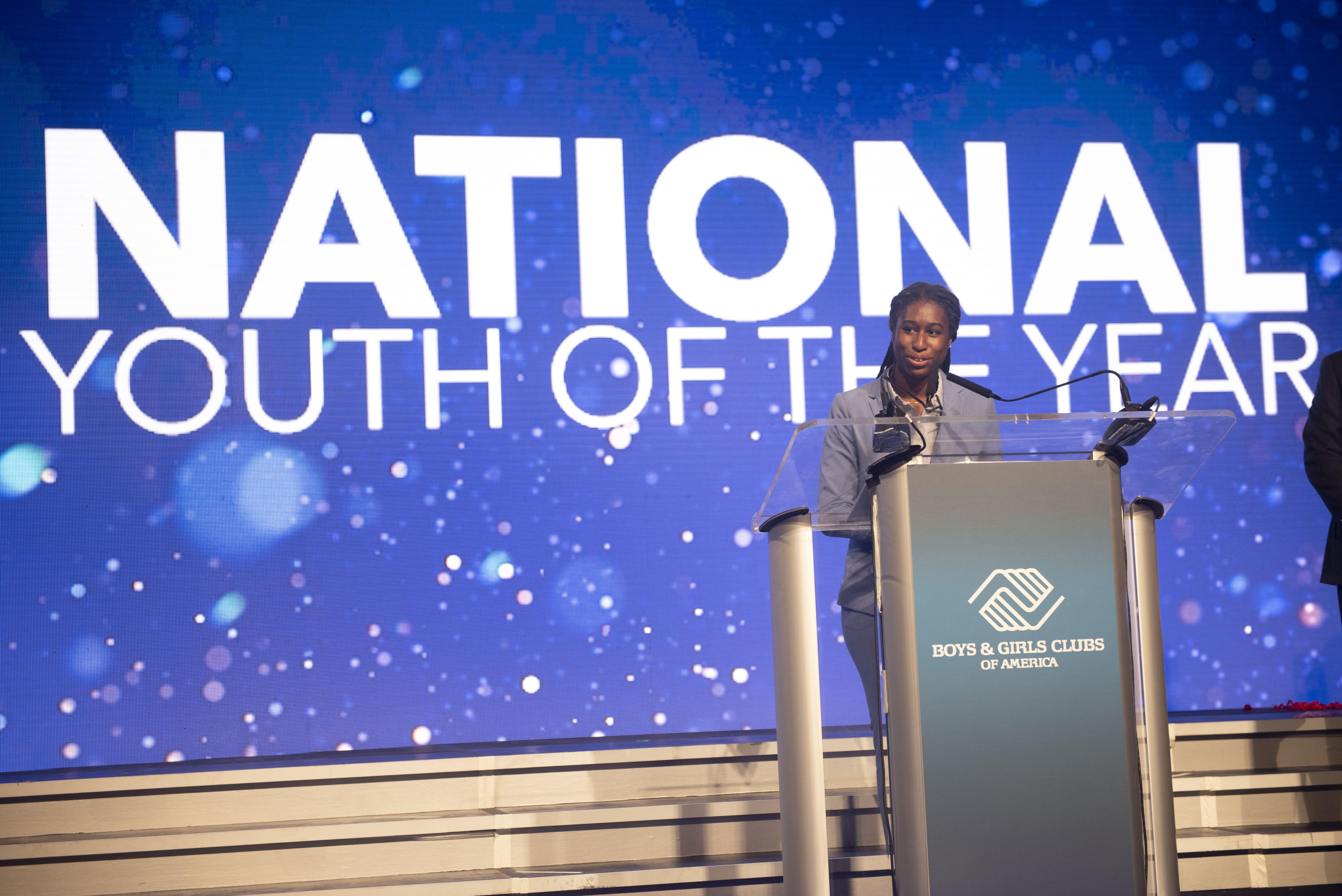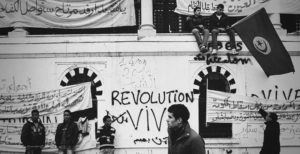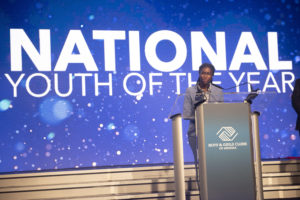
Nineteen-year-old Lick-Wilmerding alumna Sabrina McFarland is just an ordinary college freshman at Barnard College in New York City, she’s focused on keeping up her grades and doing good schoolwork, being active on campus and in the community, and maintaining a healthy social life, by hanging out with new friends she’s met from all over the world. McFarland likes to dance, perform spoken word poetry, and express herself creatively, though she said she hasn’t been able to do so as much as she wants. She listens to lots of R&B as well as “thoughtful” rap music. However, in addition to her ordinary schedule as a college freshman, McFarland travels the country speaking on behalf of four million young people in America as the Boys and Girls Club National Youth of the Year.
Typing ‘Sabrina Mc’ in Google already brings up McFarland’s name as the first hit. Hitting search lists videos that pronounce McFarland the San Francisco citywide Youth of the Year, as well as a web page link to her winning of the Princeton Prize in Race Relations, and of course, links to bio on the Boys and Girls Club website. Being the first black and first female winner of the National Youth of the Year award has also made McFarland’s winning particularly special.
McFarland stresses that it could have been anyone who won the prize. She recognizes that there are thousands of youth in America who could have done exactly what she did—it’s all about the opportunities provided to you as a young person. She has become a critic of the inequities of opportunities for young people in the US. McFarland grew up with a single mother and three siblings in the Visitacion Valley district in San Francisco, a low income and predominantly black neighborhood. In the sixth grade, she transferred from Longfellow Elementary School, a public school near the outer Mission, to The Hamlin School, a wealthy private school. At The Hamlin School, McFarland was the only kid from her neighborhood who went there. She says it showed her that “if you’re born into a situation of being underprivileged, you aren’t offered the same chance at life as other kids are. And so to me, that’s kind of what initiated my drive, in being involved in social justice and activism.” Involved she is.
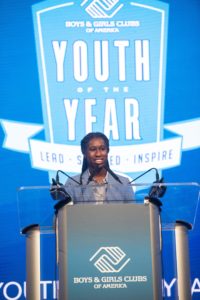
As a high school student, McFarland was a vital member of the Lick-Wilmerding community. She was vice president of the Black Student Union (BSU), as well as Student Inclusion Chair, and leader of the Lick-Wilmerding Organization For Women (LWOW). She cites these experiences and positions as helping develop her leadership skills and giving her strategies with which to navigate the world of social justice as a young person. “I got the ability to use my skills and be a leader and learn what it takes to run an entire event, or facilitate a discussion, or write a curriculum for Walk With a Purpose,” McFarland says.
McFarland said her time at Lick, as well as her other social justice work, helped her realize the potential that education has to end the cycle of poverty and lack of opportunities for people of color in underserved neighborhoods. She says that “kids who come from neighborhoods like mine see education as something that could lead them [out of their situation]. A lot of them grow up in poverty, it’s kind of a cycle of poverty, and so they’re looking for different outlets. So stealing, robbing, are these things that they have to do in order to survive, and I think a lot of times they’re very criminalized when people don’t look at the root of the problem,” the root of the problem being that, “there’s no opportunity to escape it through education because the schools they’re going to are underfunded, and then police brutality gives people a feeling that they need to protect themselves. When I was growing up, I knew a lot of people who had died by gun violence who were really young. Witnessing that growing up I think was something that was just never talked about.”
This conversation around racial violence and systemic educational oppression was something that McFarland was able to explore in several ways. She found great passion and meaning in performing spoken word poetry for Youth Speaks, a nationwide organization helping young people take control of their own narratives through literacy in various forms. After seeing a performance by Youth Speaks poets here at Lick, McFarland said she was drawn to “the way that they use their voices in life with such power to tell their stories and to elevate the voices of other people who stories are usually not heard.” In awe of the power their voices held, she was inspired to take it up herself and use it as a way to “pull people into [political] movements.”
Addressing issues of education was what brought McFarland to the Boys and Girls Club. Working as Student Inclusion Chair at Lick, one of the biggest things McFarland said she learned was, when trying to foster equity and inclusion, to “center the most vulnerable people.” She took this teaching to heart at her local Boys and Girls Club.
McFarland had been going to the Boys and Girls Club with her siblings since she was young. She described it as a friendly and welcoming place where she could escape when she didn’t want to be in the house all the time. It was safe and inexpensive childcare for her family as well, as her mother could watch them walk door to door from their house. This was especially important for her. McFarland recalls, “it just wasn’t really safe to be outside, and so having that one place where I could truly just be a kid and have fun was really nice.”
As a sophomore in high school, McFarland recounts getting her 40 PPP hours by turning to her childhood space as a source for community work, while also giving back in a meaningful way to the children in her neighborhood. McFarland would spend time after school teaching and tutoring students, helping with homework, all in an effort to help patch up the holes in her community’s education system. She spoke about using the privileged education she was receiving at Lick for the betterment of children who weren’t as fortunate as she had been: “I would see a lot of kids struggling with homework, so I was just there to be that person to give them that one to one attention that they need.”
This work and return to the Boys and Girls Club was what seeded McFarland’s rise to the national youth activism stage and what would eventually put her in rooms with politicians like Nancy Pelosi, Pamela Harris, and London Breed.
The process to win National Youth of the Year is an arduous and tedious one. As McFarland recalled, it seemed never-ending and all-consuming. The journey starts at the district level, with each San Francisco clubhouse choosing a Youth of the Year. Then, as many national competitions do, the contestants are pseudo-filtered and eliminated at various levels. After the local award, candidates must win the citywide award, the district award (in McFarland’s case, Northern and Southern California), the state award and the sectional award (East Coast, Pacific, MidWest, etc.). The final week of nationwide competition takes place in Washington, DC. At each of these levels, candidates are evaluated in three ways: an interview with judges, a package of three essays, one about your personal brand, one on your club experience, and one about your vision for America’s youth, and lastly a speech created as a combination of the essays that is delivered to the judges. The journey to National Youth of the Year begins with a four-month training period where McFarland says she met multiple times a week to practice public speaking, essay writing, and mentorship—all while applying to college and keeping up with school work. McFarland said the process was a crushing amount of work, and she recounts her work with tense vividness.“On some of those trips, I had worked 12 hour days and I would go back to my hotel room alone and spend another four-plus hours doing homework just to fly back the next day to be ready for school at 8:30 in the morning. So a lot of times, I would just go back to school and just kick right back in gear and do it with a smile on my face, and people never thought that, like, I was actually truly drained and tired. And putting in all this work like after school every day, like rehearsing my speech, I recorded my speech on my phone and I would listen through my headphones and practice while I was catching the bus to school.”
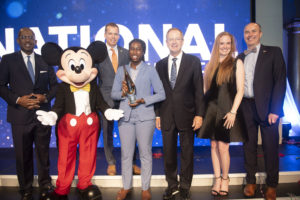
All of McFarland’s hard work paid off in the only way she could have dreamed: At the end of this process, she was named the National Youth of the Year. “What do you know?” she says with a sigh. “It’s still crazy to say that kind of discussion to honor even someone. I can’t believe it.”
McFarland now spends a large amount of time occupying her role and presence as National Youth of the Year. She travels a lot, makes appearances, speaks at events and attends conferences. She recognizes that she represents over 4.7 million young people, and says that when it comes to this work she has to “put in 110%.” 110% is a lot for a student to put into anything, especially because McFarland was already very involved at Lick and in extracurricular activities. When asked how she managed to push herself to keep going, her answer was immediate: “To be honest, I kept reminding myself that it’s not about me. Truthfully, if you got rid of all the money, the scholarship money that I got, all the gifts and even the title, I truly don’t care about any of that stuff. I just wanted to, you know, represent the people of my community and express how much Boys and Girls Club has helped me.”
Winning the National Youth of the Year award is everything McFarland could have hoped for. “I think I felt like my voice was so powerless growing up,” McFarland says, “and to have it put on this platform and to be given the space to speak to the people who are in power, and to truly be able to ask to implement change, has all been a very fulfilling experience for me.”
Now having such a big stage for her voice to be heard on, McFarland reminds us that “you can’t be what you can’t see.” She says she always remembers that “it’s realy just about the kids.” She says, “I just hope that I can be someone that other kids can see themselves in…. The positivity you want to see in the world, you need to foster that yourself. I try to create a world that I want to see, that I want to live in, and that I want to see other kids living in.p
Despite all she’s accomplished, McFarland still sees herself just as a voice for those whose voices cannot be heard. She stresses that any kid could have done what she did, it really is about the opportunities made available to everyone. McFarland wants these kids to know that she is there on the national stage to help “foster their voice and really help show them how to shine their light in places where there is darkness.”




